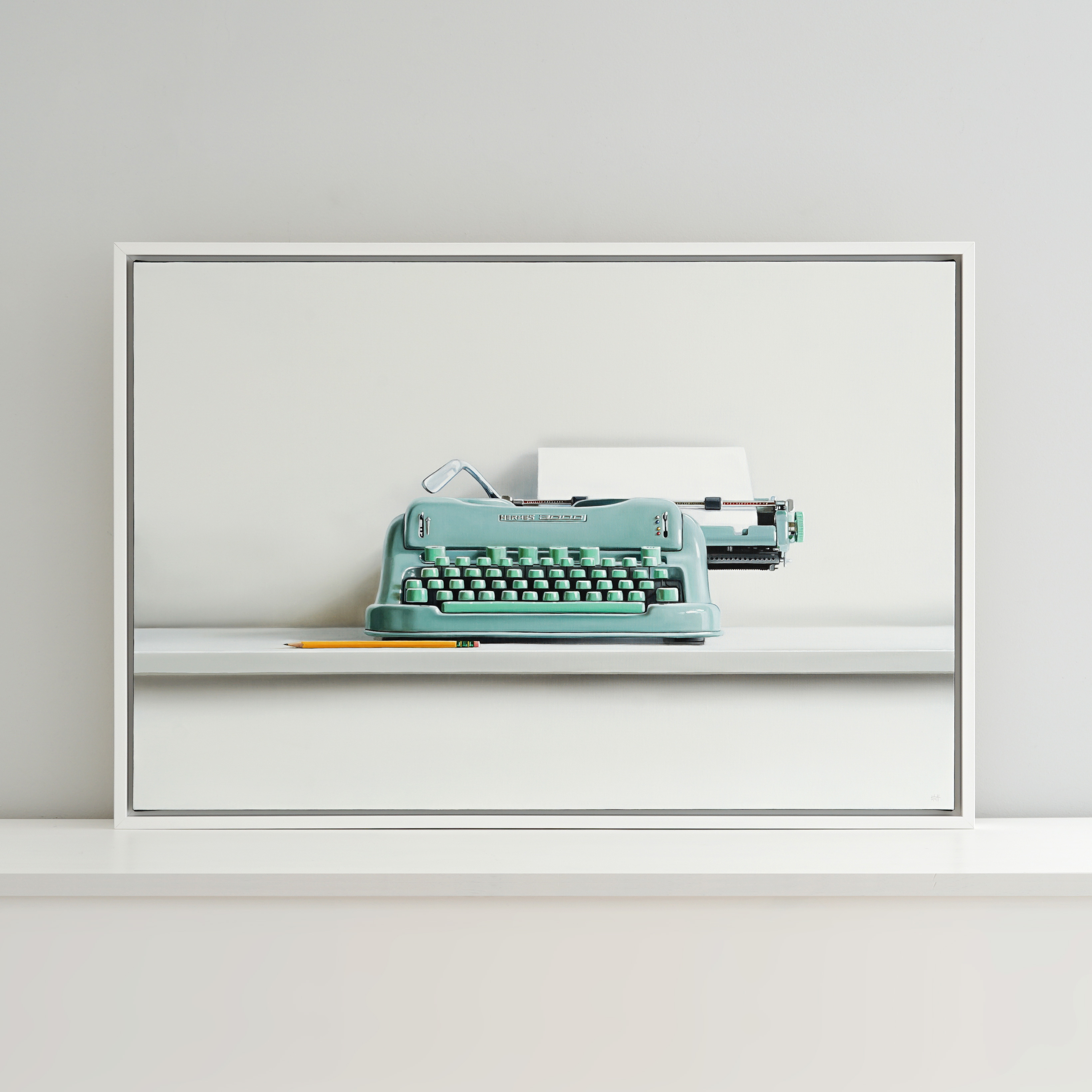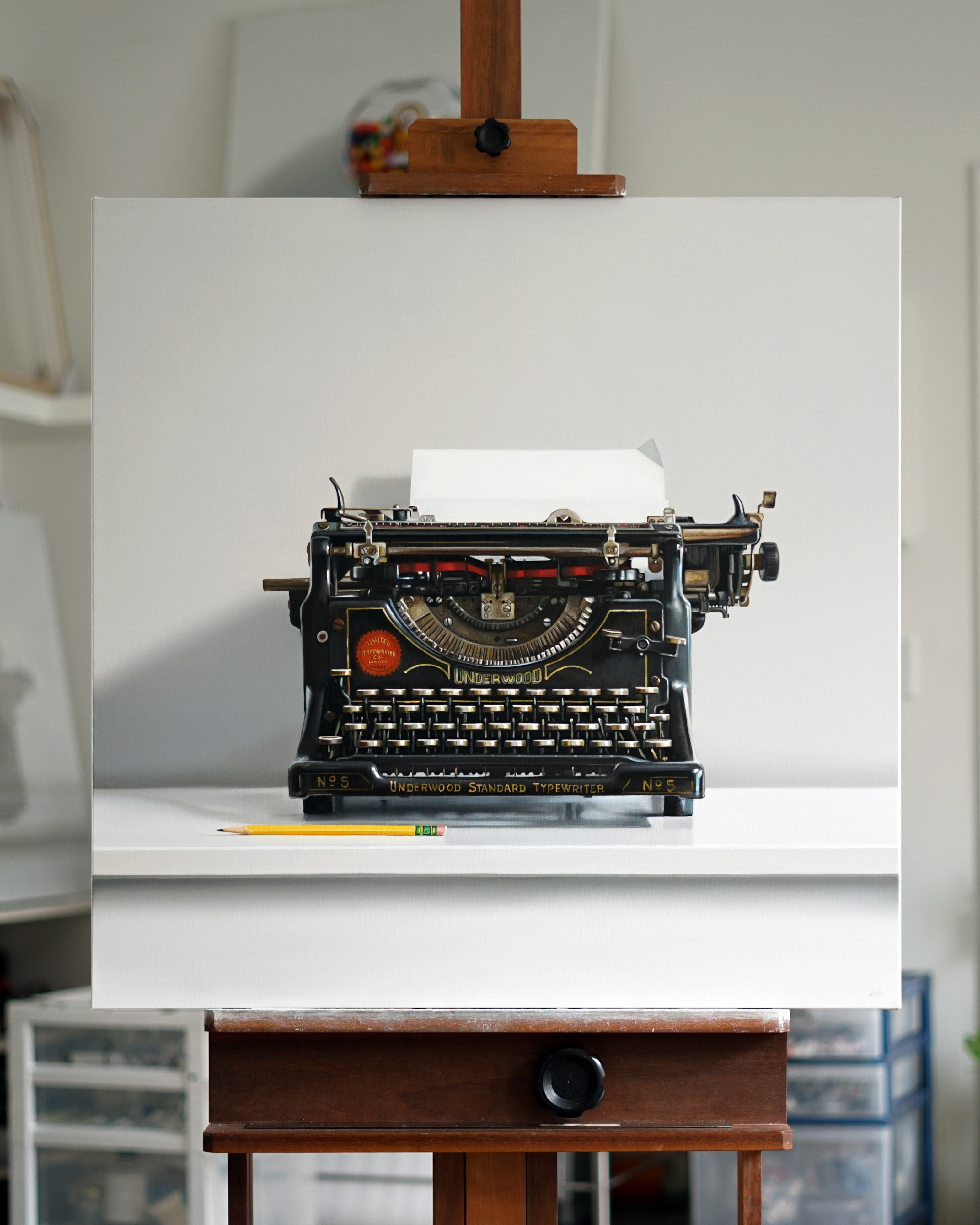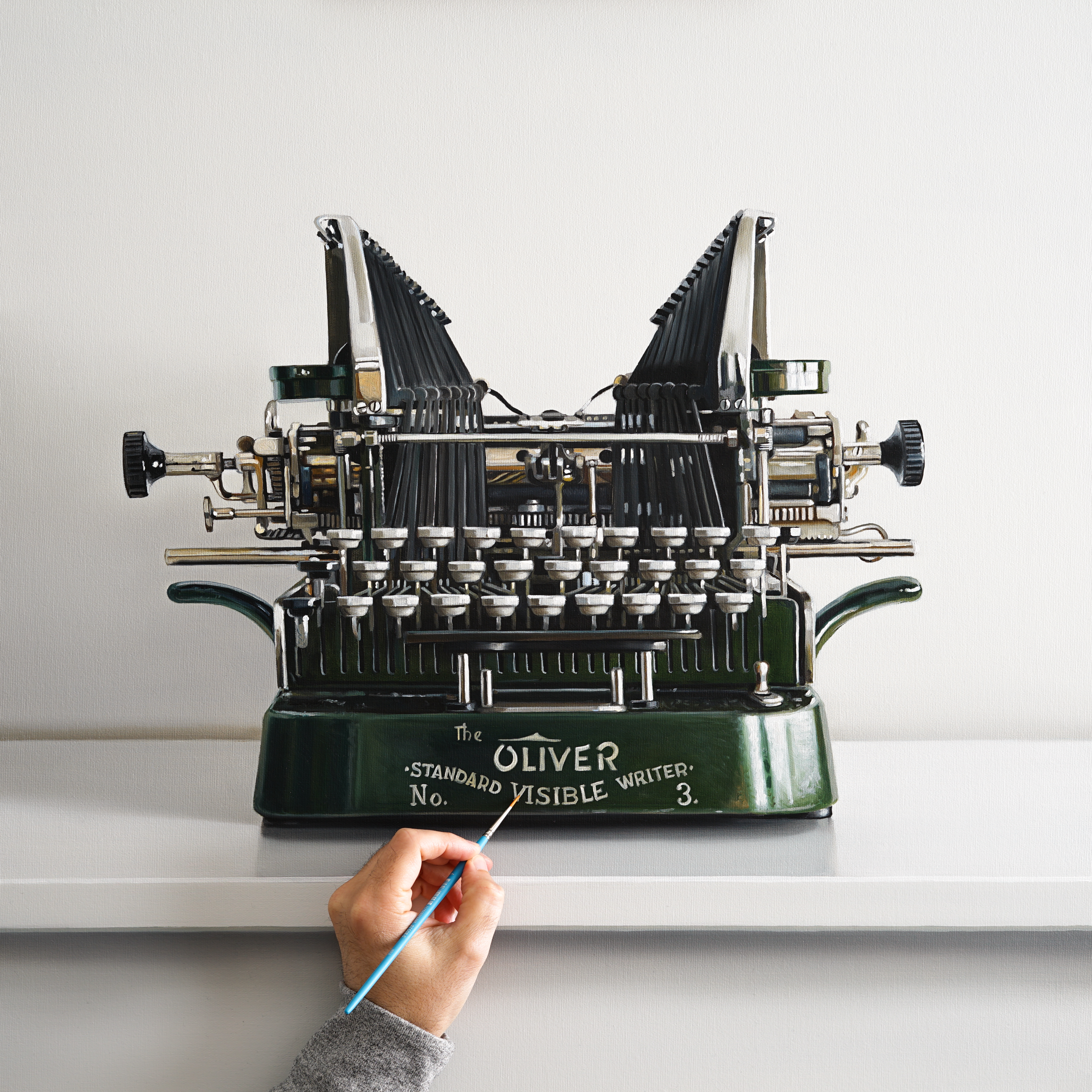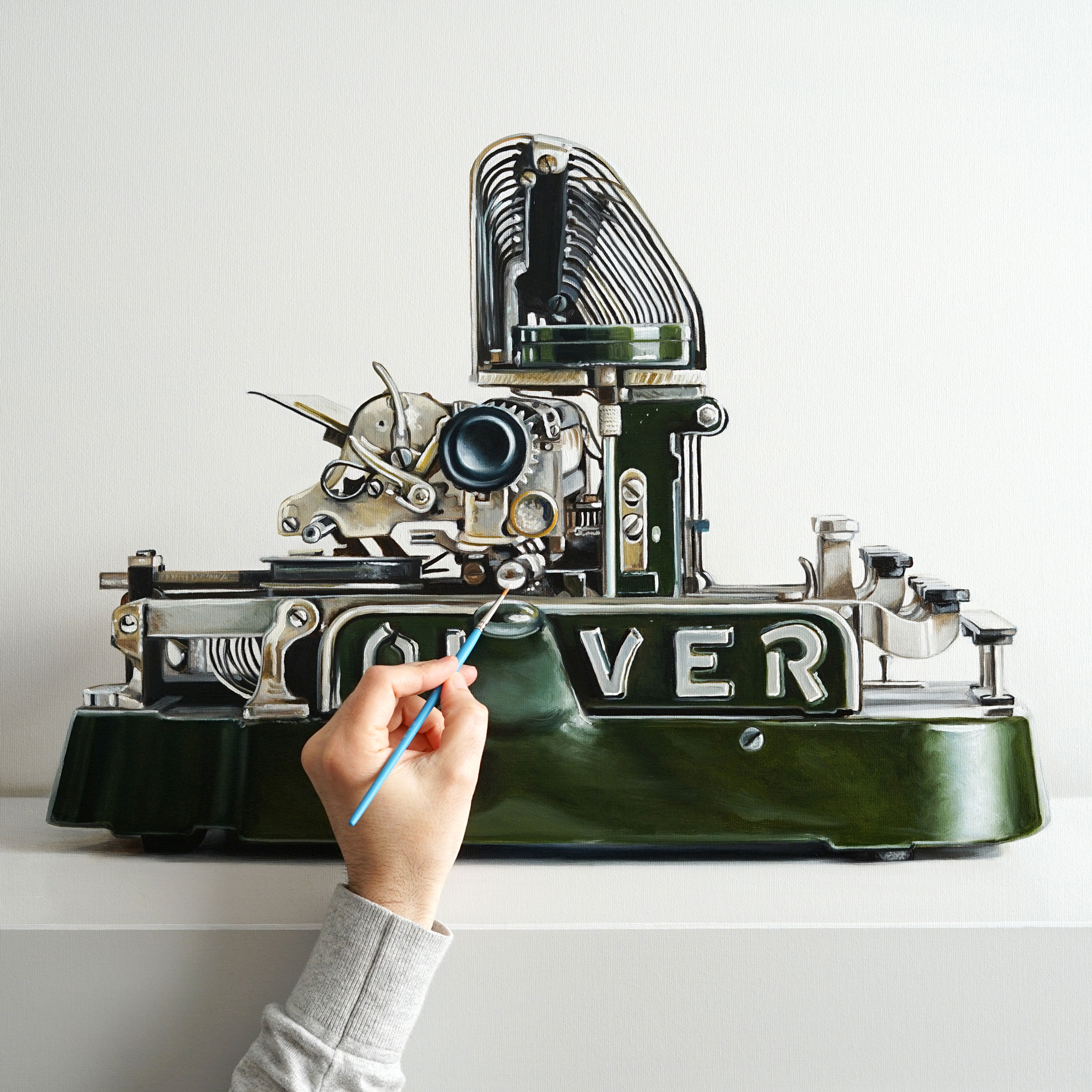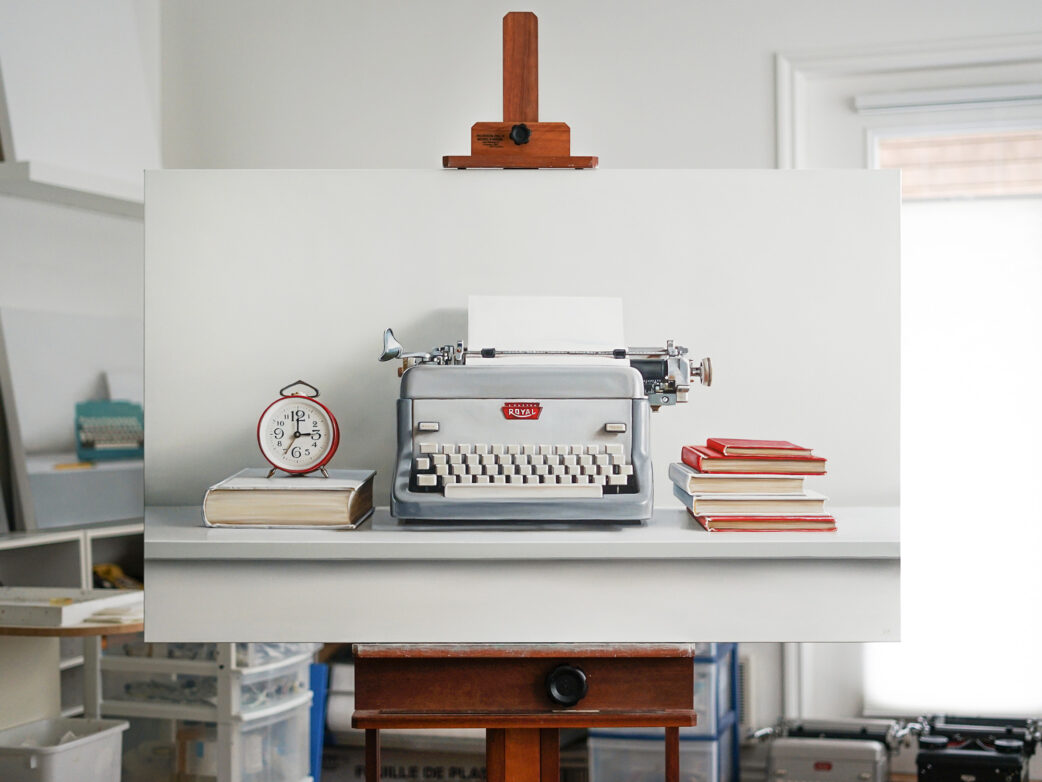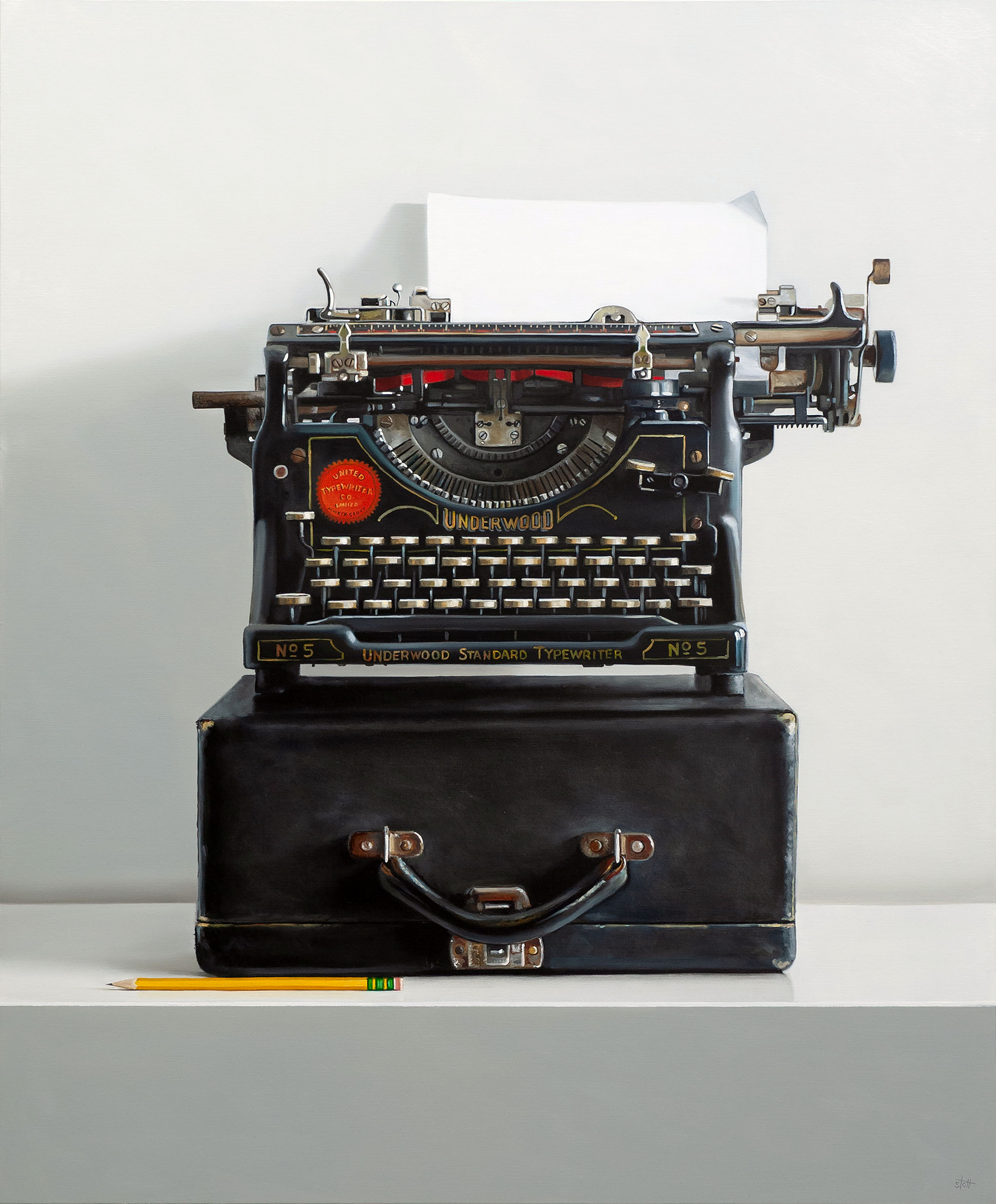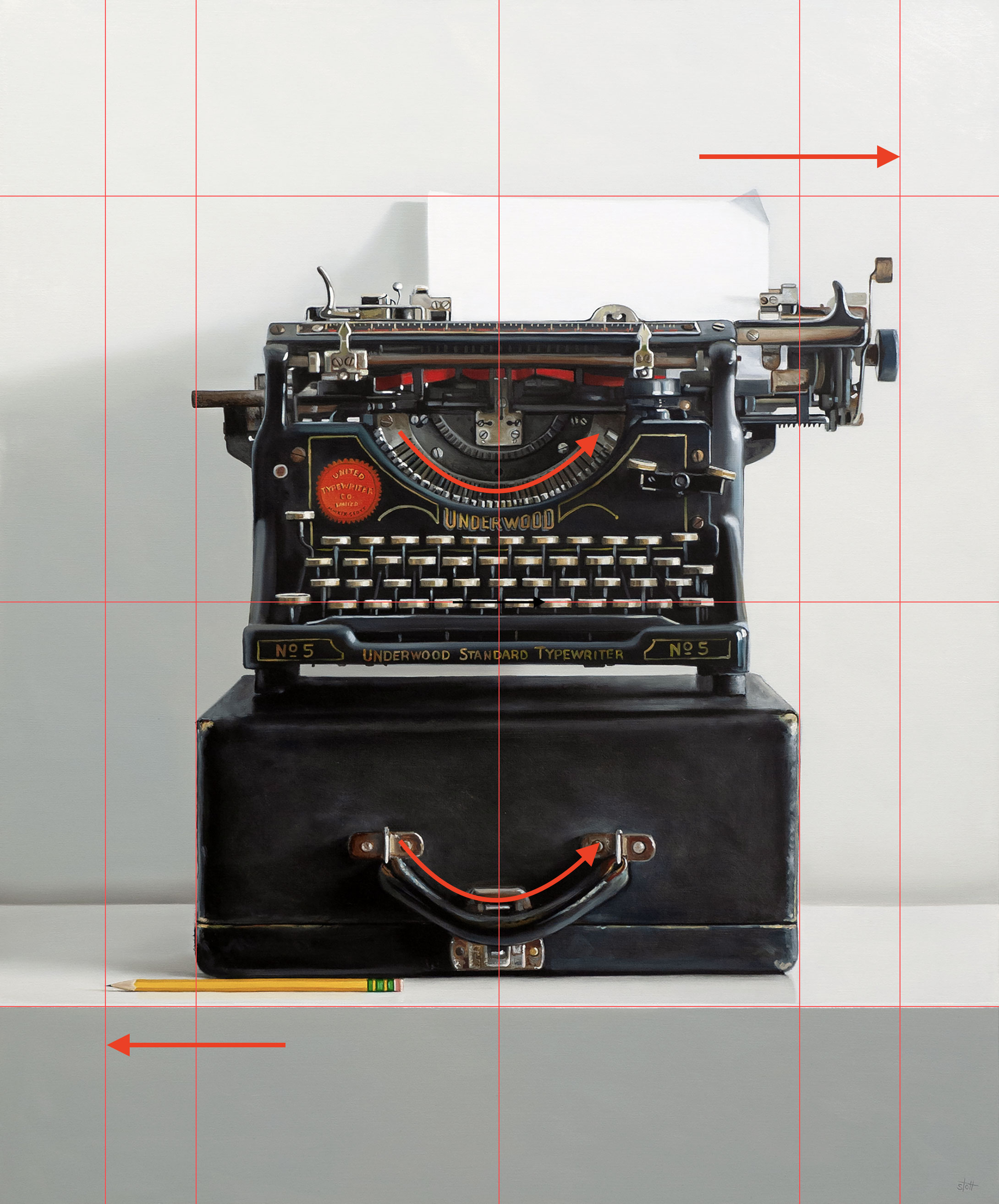I just completed a series of three paintings for my upcoming exhibition in New York City. Three birds-eye view typewriters.

I love painting the mechanical components of the machines.
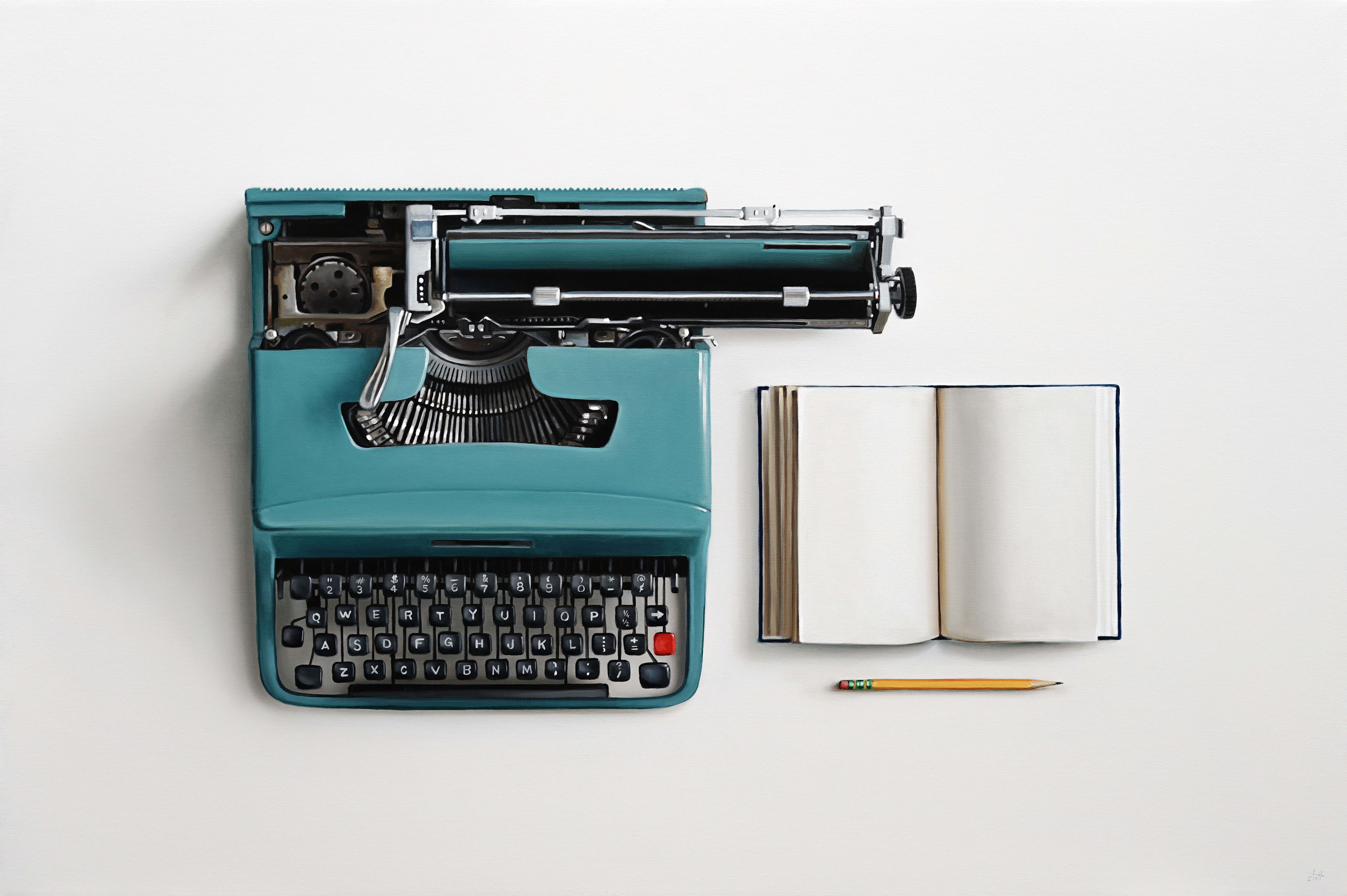
There will always be something charming and delightful in typewriters. Each piece is 2 feet tall and three feet wide. The typewriters are all depicted as life-size. My goal with these paintings is to have a viewer almost get a sense of being able to touch and use the typewriters.

When I start each painting, it never fails that I end up slightly overwhelmed at the number of keys I’ve locked myself into painting. I once told someone that my ability to sit quietly and do something as tedious as painting 150 tiny circles and squares is probably the key to why I can paint as much as I do.

